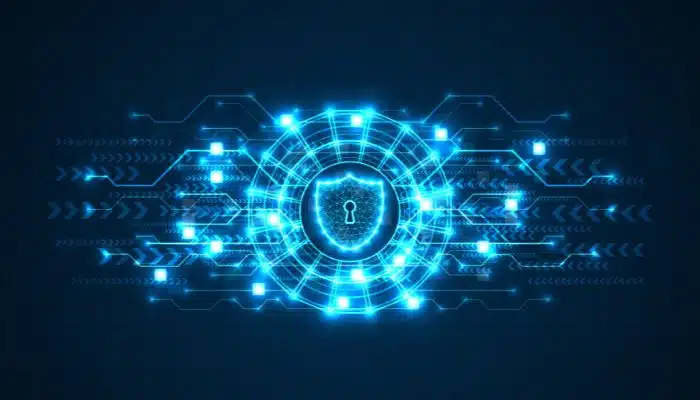Cyber threats are a pervasive reality in our digital age. A cyber-attack, more than a remote possibility, is a latent risk that can compromise the security of data and computer systems.
That is why in this article, more than just informing you, Kiwop wants to alert you so that you do not become a victim of these malicious activities. Stay tuned, here we tell you what a cyberattack is, its variants and, most importantly, how we can defend ourselves against them.
From digital security practices to the latest trends in prevention, learn about the world of cybersecurity to save your information and keep potential cyber intruders at bay. Protect your digital space with solid knowledge and effective strategies!
What is a cyber attack?
A cyberattack is a malicious act carried out by individuals or groups with the intention of compromising the security of computer systems, networks or electronic devices. These attacks can have different objectives, such as theft of confidential information, interruption of services, extortion, or even irreparable damage to data.
Cyber-attacks can manifest themselves in various forms, such as malware, phishing, ransomware, among others, and represent a constant threat in today’s digital environment. Effective prevention and response to these attacks are critical to safeguarding the integrity and privacy of information.
Types of cyber-attacks
1. Viruses
Viruses are computer programs that attach themselves to existing files and replicate themselves when those files are executed. They can damage or alter data and programs on the system. Spread occurs through the execution of infected files.
2. Worms
Unlike viruses, worms do not need host files to spread. They replicate themselves and move through networks, exploiting vulnerabilities in connected systems. Its spread can be rapid and extensive.
3. Trojans
Trojans are programs that disguise themselves as legitimate software to trick users into gaining unauthorized access to their systems. They can open a backdoor for other types of malware or perform unwanted actions without the user’s knowledge.
4. Ransomware
The ransomware encrypts the victim’s files or systems and demands a ransom to restore access. It is a form of digital extortion that can cause irreversible loss of data if the ransom is not paid.
5. Spyware
Spyware installs itself on a device without the user’s knowledge and monitors the user’s activities. It may collect personal information, such as passwords or credit card data, and send it to third parties without users’ consent.
Steps to prevent a cyberattack
Preventing cyber-attacks is critical in the digital age. Here are some key steps to protect your systems and data:
Staff awareness
- Educate employees on safety practices.
- Encourage strong passwords and their regular updating.
2. Software update
- Keep all systems and programs up to date.
- Install security patches provided by vendors.
3. Firewall and antivirus
- Use firewalls to filter unwanted traffic.
- Install up-to-date anti-virus and anti-malware software.
4. Access Control
- Implement access control policies.
- Assigns minimum privileges required for each user.
5. Regular backup
- Make frequent backups of critical data.
- Store backups in secure, offsite locations.
6. Continuous monitoring
- Establish monitoring systems to detect suspicious activity.
- Implement automatic alerts for possible threats.
7. Continuing Education
- Continuous training on new threats.
- Keeps staff informed on best security practices.
8. Device use policies
- Establish clear policies on the use of personal devices on the corporate network.
- Consider implementing mobile device management solutions.
9. Vulnerability analysis
- Performs security scans and vulnerability analysis.
- Corrects identified vulnerabilities proactively.
10. Incident response
- Develops an incident response plan.
- Establishes clear procedures for mitigating and recovering from an attack.
Prevention and cyber security are ongoing efforts. Adapting to the latest threats and staying informed about security best practices are key to reducing the risk of cyber-attacks.
Prevention of cyber attacks
Preventing cyber attacks is essential to protect the security and integrity of systems and data. Here are some key strategies to avoid cyber attacks:
Firewalls and network security
- Deploy robust firewalls and configure network security policies to control and monitor traffic.
2. Updates and patches
- Keep all systems, applications and software up to date with the latest security patches to close potential vulnerabilities.
3. Antivirus and antimalware
- Use up-to-date anti-virus and anti-malware software to scan for and remove potential threats.
4. Strong authentication
- Implement strong authentication methods, such as the use of complex passwords and two-factor authentication.
5. User education
- Provides regular training to employees on safe online practices, making them aware of potential risks.
6. Regular backup
- Make regular backups of critical data and store them securely for easy recovery in the event of an attack.
7. Access Control
- Limit access to systems and data to authorized personnel only, using access control policies.
8. Continuous monitoring
- Implement continuous monitoring systems to quickly identify and respond to suspicious activity.
9. Data encryption
- Use encryption to protect the confidentiality of information, especially during transmission.
10. Vulnerability management
- Conduct regular vulnerability assessments and remediate any identified weaknesses.
11. E-mail security
- Implement robust security measures to filter out unwanted and malicious emails.
12. Device control
- Establishes policies for the secure connection of devices to the corporate network and controls their access.
13. Incident response
- Develop an incident response plan to act quickly in the event of an attack.
14. Security audits
- Conducts periodic audits to evaluate the effectiveness of the security measures implemented.
15. External collaboration
- Participate in cybersecurity communities and share threat intelligence to stay on top of the latest trends.
Taking a comprehensive approach to cyber security and staying on top of the latest threats are critical to staying one step ahead of potential cyber attacks.
What to do during a cyber attack?
During a cyber-attack, it is crucial to take quick and effective measures to limit damage and protect the integrity of your systems and data. Here are steps you can follow:
1. Isolate the threat
- Immediately disconnect the affected systems from the
Notifies the responsible parties
- Inform your cyber security team and decision makers about the incident.
3. Collect data
- Document information about the attack, including malware types, traffic patterns and any suspicious activity.
4. Preserving evidence
- Retain records and digital evidence that may be useful in subsequent investigations or for reporting to authorities.
5. Restore from backups
- Restore affected systems from clean, verified backups.
6. Collaborate with security experts
- Seek the assistance of cybersecurity professionals to analyze and mitigate the threat.
7. Notifies the authorities
- If necessary, inform the appropriate authorities and follow established protocols for reporting cyber incidents.
8. Transparent communication
- Communicate internally and externally in a transparent manner, especially if customer data is compromised.
9. Implement security improvements
- Identify the vulnerabilities that allowed the attack and take measures to strengthen security.
10. Subsequent evaluation
- Conduct a detailed review of the incident to understand how it occurred and how to improve safety protocols.
11. Staff training
- Training Provides additional training to staff on lessons learned and security best practices.
12. Updates and patches
- Apply patches and security updates to close possible loopholes exploited during the attack.
Remember that the response to a cyber-attack must be quick, coordinated and based on a previously established incident response plan.



Leave a Reply